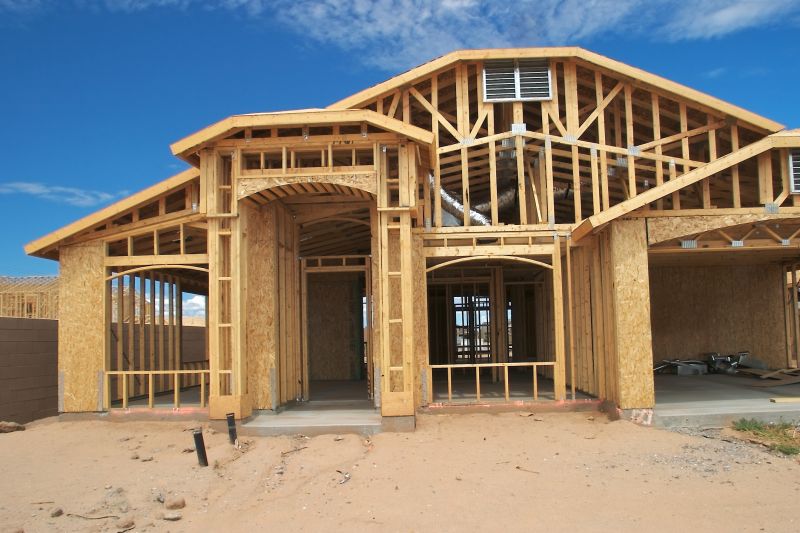Ultimate Collection Of Residential Framing Supplies
Access a comprehensive range of framing products designed to simplify installation and enhance the structural integrity of your home.
 Residential framing products are essential components in constructing and renovating homes, providing the structural backbone for walls, floors, and ceilings. These products come in a variety of materials and styles to suit different building requirements, aesthetic preferences, and budget considerations. From traditional wood framing to metal alternatives, the selection of framing materials can significantly influence the durability, stability, and overall safety of a residential structure.
Residential framing products are essential components in constructing and renovating homes, providing the structural backbone for walls, floors, and ceilings. These products come in a variety of materials and styles to suit different building requirements, aesthetic preferences, and budget considerations. From traditional wood framing to metal alternatives, the selection of framing materials can significantly influence the durability, stability, and overall safety of a residential structure.
Top Overall Option
Versatile Framing Lumber
Versatile framing lumber is a widely used material that offers a reliable balance of strength, ease of handling, and compatibility with various construction techniques. It is suitable for framing walls, floors, and roofs, providing a sturdy foundation for residential structures. When selecting framing lumber, consider dimensional stability, grade quality, and moisture content to ensure optimal performance throughout the building process.
Types of Products For Residential Framings
Dimensional Lumber
Standard wood boards used for framing walls, floors, and roofs, available in various sizes and grades for different load requirements.
Engineered Wood Products
Manufactured wood materials such as I-joists and laminated veneer lumber that offer enhanced strength and uniformity for load-bearing applications.
Metal Studs
Steel or aluminum studs used as an alternative to wood framing, often chosen for their durability and resistance to pests and moisture.
Concrete Blocks
Precast or poured concrete units used for foundation walls and load-bearing partitions in residential construction.
Structural Insulated Panels
Prefabricated panels that combine insulation and framing in a single unit, promoting energy efficiency and quick assembly.
Plywood and OSB Sheets
Engineered wood panels used for sheathing, subflooring, and roof decking to provide stability and support.
Laminated Veneer Lumber
High-strength engineered wood product used for beams and headers requiring extra load capacity.
Furring Strips
Thin strips of wood or metal used to create a level surface or space for insulation and wiring behind walls.
Nail Plates and Connectors
Metal fasteners and plates used to reinforce joints and connections in framing assemblies.
Bracing and Sheathing
Materials used to provide lateral stability and structural reinforcement for walls and roofs.
Insulation Boards
Rigid foam or mineral wool panels used within framing cavities to improve thermal performance.
Hinges and Fasteners
Various hardware components essential for securing framing elements and enabling movable parts.
Corner Brackets
Metal brackets designed to reinforce corners and junctions within framing structures.
Roof Trusses
Pre-fabricated or custom-designed truss systems that support roof loads efficiently.
Popular Choices
Commonly used for framing walls and floors, available in various sizes and grades to suit different projects.
A popular alternative to wood, offering durability and resistance to pests and moisture in residential framing.
Engineered wood products that provide strong support for floors and ceilings with uniform dimensions.
Widely used for wall and roof sheathing due to their affordability and structural properties.
Commonly selected for basement walls and load-bearing foundation elements in residential buildings.
Often used for creating a level surface or space behind interior walls for wiring and insulation.
Growing in popularity for their ease of installation and thermal properties in residential projects.
Essential for ensuring lateral stability and safety in framing structures.
Used for beams and headers requiring high load capacity, offering consistency and strength.
Crucial for securing framing elements and ensuring structural integrity.
Choosing the right framing products involves understanding the specific needs of your project, including load-bearing capacity, environmental conditions, and compatibility with other building materials. Proper installation and quality materials are critical to ensuring long-term performance and safety. Whether you are a professional contractor or a DIY enthusiast, selecting appropriate framing components can make a substantial difference in the ease of construction and the integrity of the finished home.
In addition to traditional wood and metal options, there are innovative framing solutions such as engineered wood products and lightweight panels that offer enhanced strength and ease of handling. These options can reduce construction time and improve overall project efficiency. It is also important to consider local building codes and regulations to ensure compliance and safety standards are met throughout the framing process.
Investing in high-quality framing materials and accessories not only supports the structural soundness of your home but also contributes to energy efficiency and potential future modifications. Properly selected and installed framing products form the foundation for a safe, durable, and comfortable residential environment, making it a crucial aspect of any construction or renovation project.
Key Buying Considerations
- Material durability and suitability for the local environment
- Load-bearing capacity required for specific framing elements
- Compatibility with other building materials and systems
- Ease of handling and installation processes
- Compliance with local building codes and standards
- Moisture resistance and susceptibility to pests
- Weight and transportability of the product
- Availability of different sizes and grades
- Cost-effectiveness and overall project budget
- Environmental conditions such as humidity and temperature variations
- Reinforcement options for high-stress areas
- Compatibility with insulation and finishing materials
- Manufacturer reputation and product reviews
- Warranty and support options
- Future modification or expansion considerations
